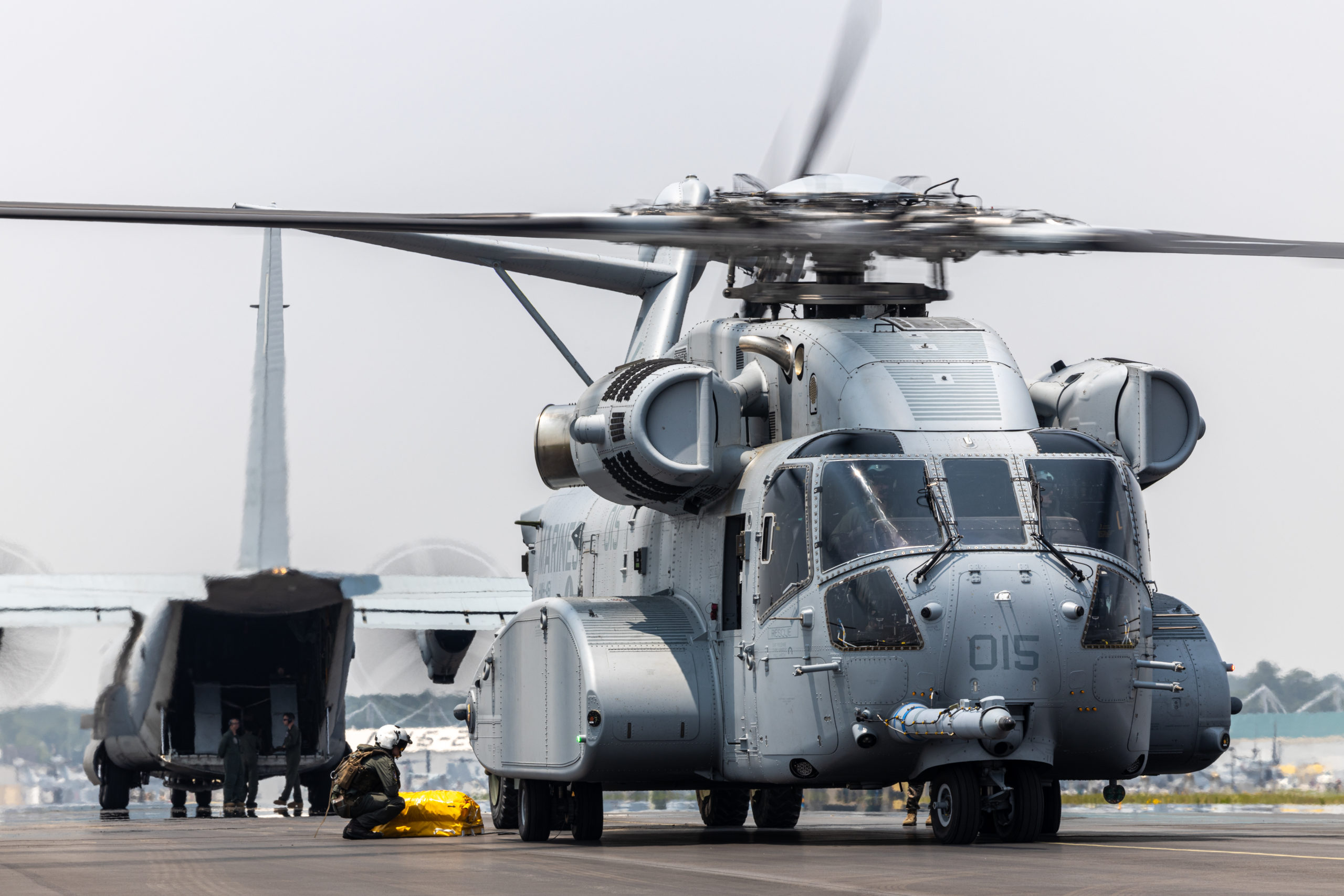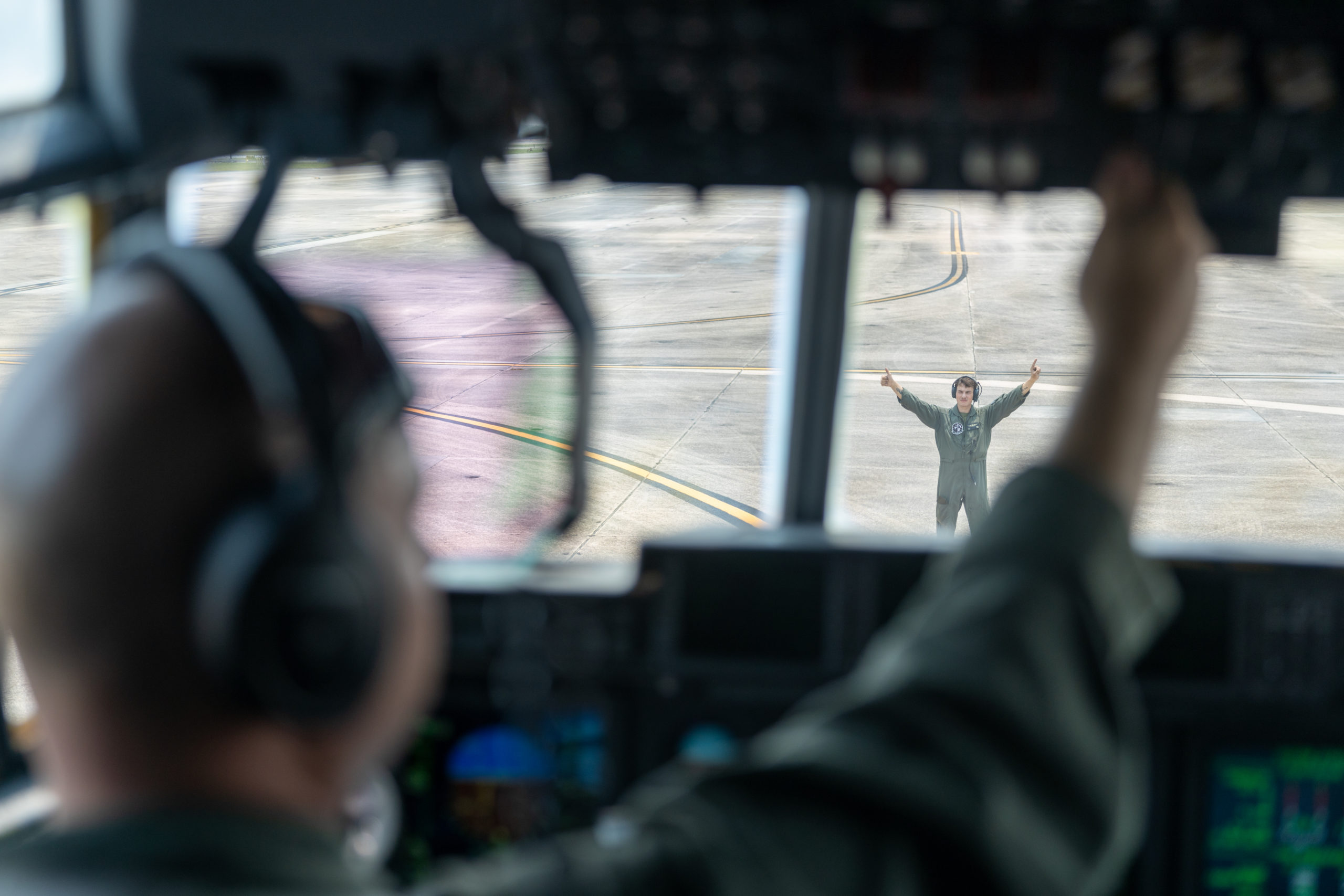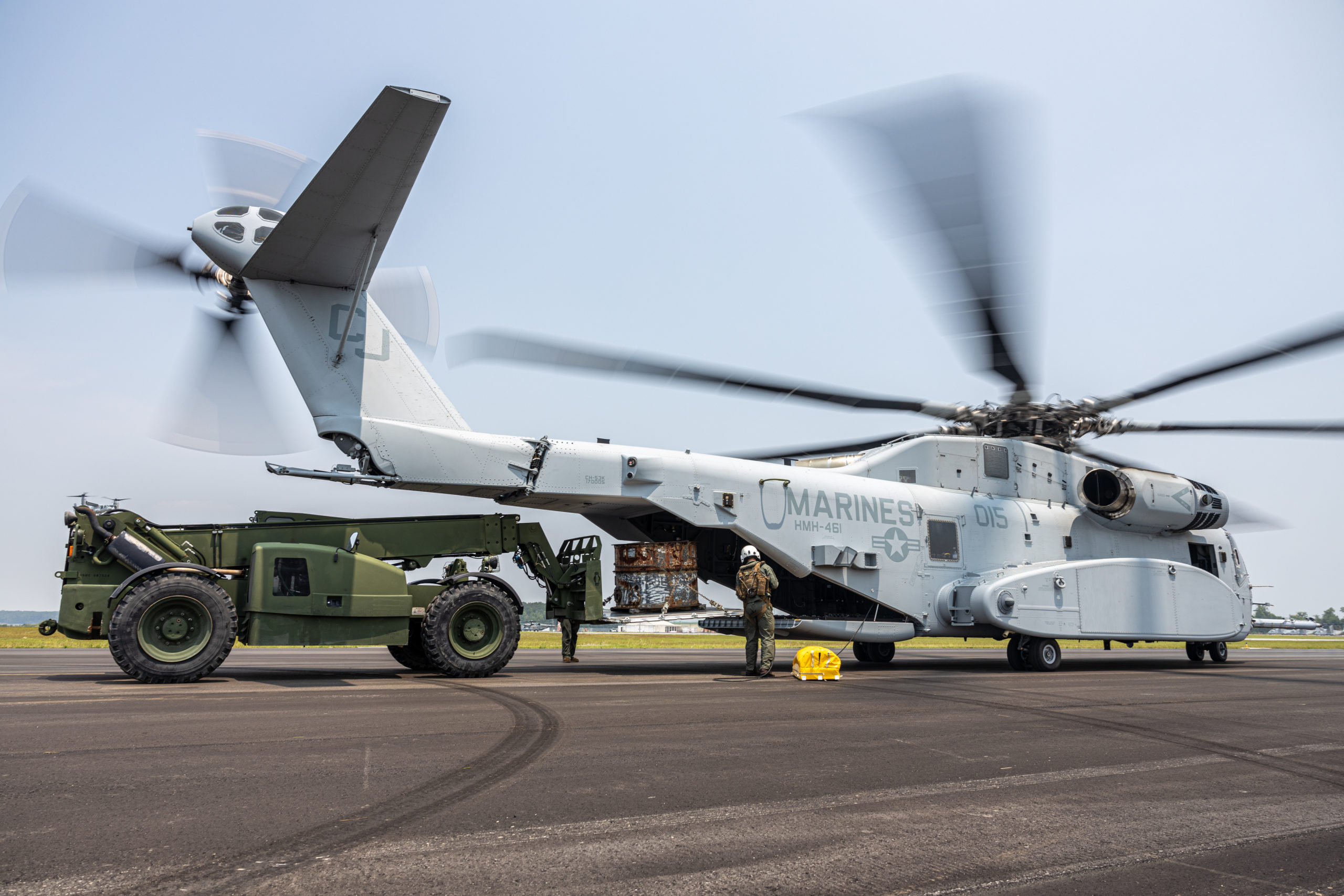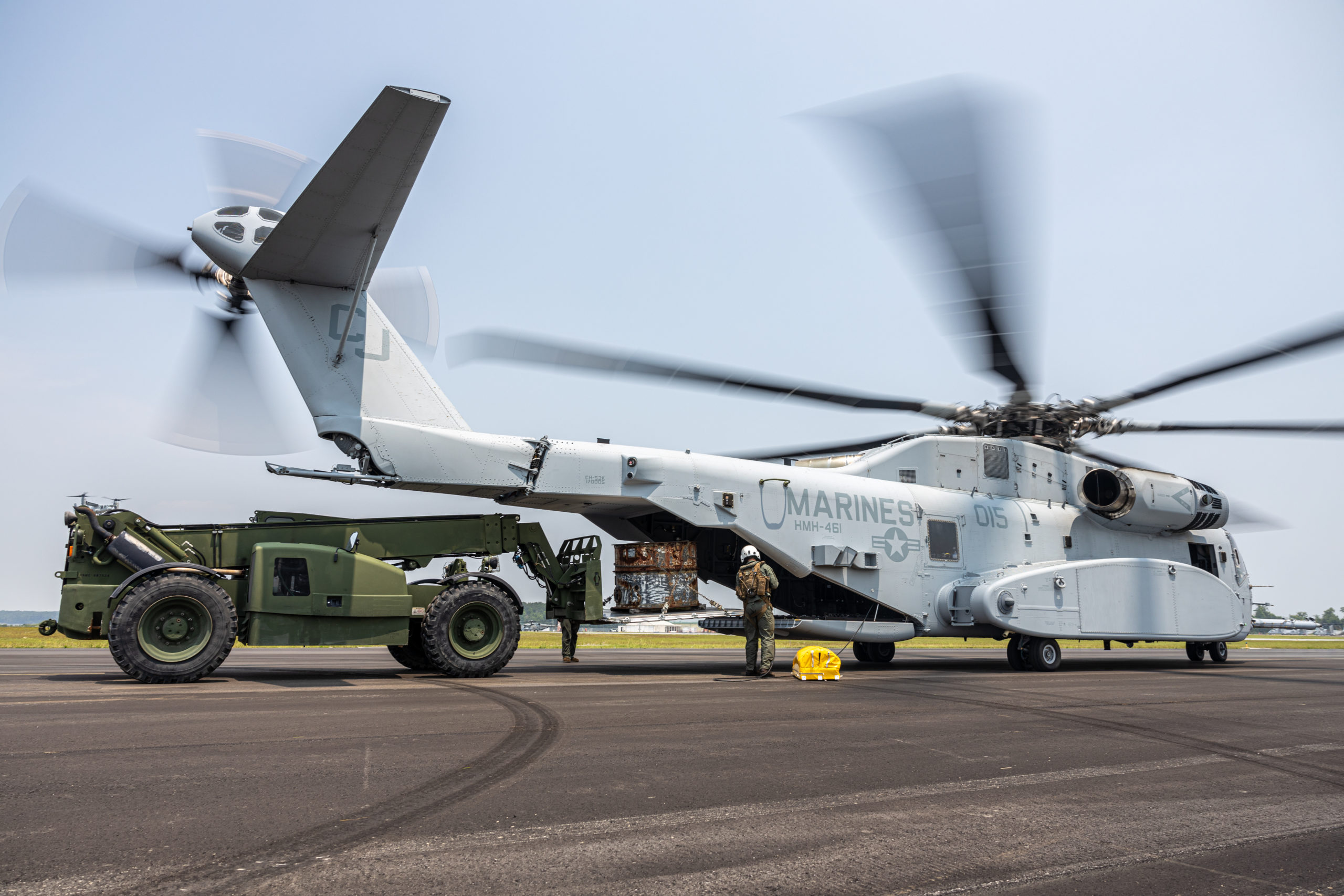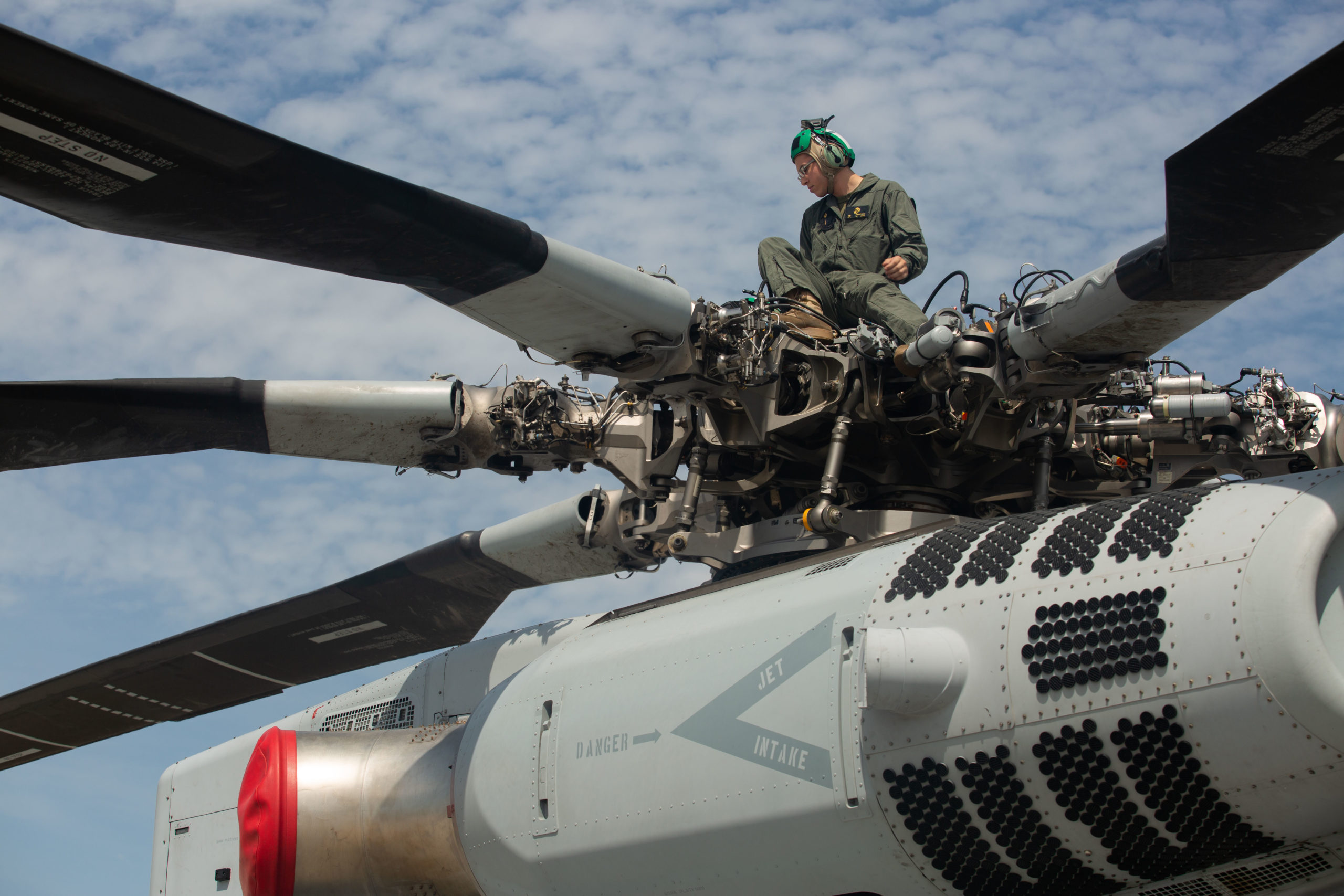By Robbin Laird
I first visited the Sikorsky plant in Stratford, Connecticut in 2018 to view the beginning efforts to standup the production line for the new build CH-53K helicopter. I returned in May 2023 to see the progress in doing so as the CH-53K begins its journey to the fleet.
When visiting in 2018, I saw the plans for making changes on the factory floor for the build of the CH-53K. A Blackhawk line was going to be shut down and a CH-53K line stood up in its place. Other changes were shown to me during that 2018 factory tour, with regard to how the final tests and certification of the aircraft were to be made, and most interestingly the software lab and the upgrade process being worked.
And I visited the in-house blade production facility. In the article I wrote in 2018 after visiting the blade facility, I noted: “The plant is preparing for the ramp up in production of the K blades, both main rotor and tail rotor blades, and because of the enhanced size of the blades compared to the E, modifications are being made to produce the new blades in the plant.
“And because the K is an all-composite blade compared to the legacy aircraft, large autoclave ovens are needed to make the blades as well. Currently, there are two large 55-foot autoclaves on site to handle the blades but a second will be built as the ramp up accelerates.”
During that visit, it was emphasized that the CH-53K was being designed, built, upgraded, and maintained through a digital thread process. What this means is that the aircraft is designed digitally; the digital design is projected into the build process using a digitally shaped work process; engineering redesigns are able to be projected directly into the build process as the learning process unfolds for manufacturing; and maintainers can use a digital twin to do maintenance and that digital twin will change as the production model of the aircraft changes through the digital thread process.
I was able to see examples of this process on the actual production line during my recent visit. My tour guide was Bill Falk, Director, CH-53K Helicopter Program at Sikorsky. What I saw was the first two of the projected three CH-53K production lines. The initial line was indeed where during my last visit was a Blackhawk line. The line has five build stations and then the aircraft goes into the final flight operations and checkout before being delivered to the client.
There is a second line parallel to the initial line and a third line will be added across the aisle when the plant will be producing 24 aircraft per year. Falk explained to me that an international customer will take a green USMC aircraft from the main assembly line and then move onto the third line where national customizations made to the green aircraft.
Falk discussed with me three examples of the digital thread production approach. The first involved what they call the right hemisphere machine. The second is the digital wrench. And the third is the build process for a key element of the tail rotor on the helicopter.
The right hemisphere machine which I saw on two parts of the build process looks like a hospital work stand and contains the digital guide process which aids the worker in doing their task digitally, rather than having to rely on paper instruction manuals.
This is how Falk described the right hemisphere machine and the work process. “The right hemisphere is a manufacturing tool for personnel use to build the aircraft. On our Blackhawks, the aircraft are built was with paperwork instructions. The CH-53K completely uses a different paradigm.
“The CH-53K was built with 3D Catia models for all of the parts that make up the aircraft. This data was fused to create digital work instructions. The work instructions are now digital and digitally presented. The operator now can see the three-dimensional data in their build tasks which also provides the steps they need to follow in order to do their task.”
He then turned to a discussion of an example of the digital build process. This example is of the use of an automated torque wrench with virtual reality (VR) googles.
Falk explained: “We’ve added a digital interface to the torque wrench, where now the torque wrench can be programmed to the required torque value for an individual bolt as part of the installation process. The VR system recognizes the part through the digital database, so it knows the workers are looking at the correct part. It can colorize and highlight what the next operation that the assembler needs to complete.
“And then the VR goggles are watching the operator put the torque wrench on the correct bolt. The torque wrench is programmed to torque that bolt down to the value required in the in the work instructions.
“And then after the torque wrench completes it, it can actually store and then transmit the exact torque value on that bolt into the database of information in terms of how that aircraft is built. This then enables a verification process which cuts out the old system of the worker having to enter the torque value of each bolt into a report reviewed by Sikorsky and government personnel to verify that the work has been done correctly.”
This obviously enhances the quality of the work and speeds up the process both in doing the work and verifying the work.
The final example was of the build process for a key part of the tail rotor assembly. The part in question is called a flex beam. As Falk explained: “Inside the tail rotor blade is a key part called the tail rotor flex beam. It is a key part for the effective functioning of the tail rotor blade. It is a composite part made up of 737 piles of composite materials that have to be laid and fused to create that flex beam.”
As Falk underscored, the build process has shifted from workers building the flex beam by hand to robots doing so. And this machine is at the plant, so Sikorsky does not have to outsource the product as well. A robot builds the beam layer by layer. During the process a laser inspection system measures all of the details of each of the plies built by the robot.
This significantly enhances the quality and speed of the production process. Falk indicated that this new process has led to a 40% reduction in the build time for this part.
In short, the visit in 2018 indicated the approach and the plan. The 2023 visit showed the approach and plan being implemented. And the existence of the digital twin will be a major input to the sustainment and logistics process which I will focus on in a later article.
Featured Photo: A view of the assembly line today for the CH-53K. Credit: Lockheed Martin


